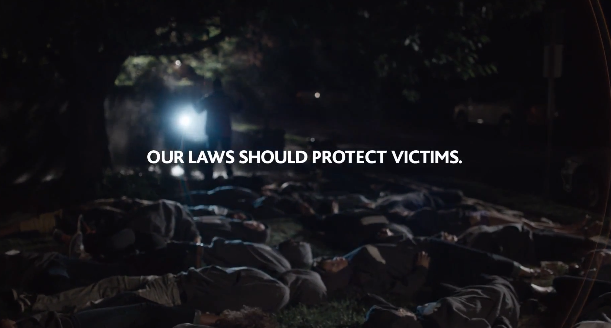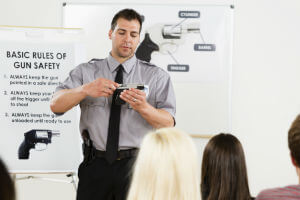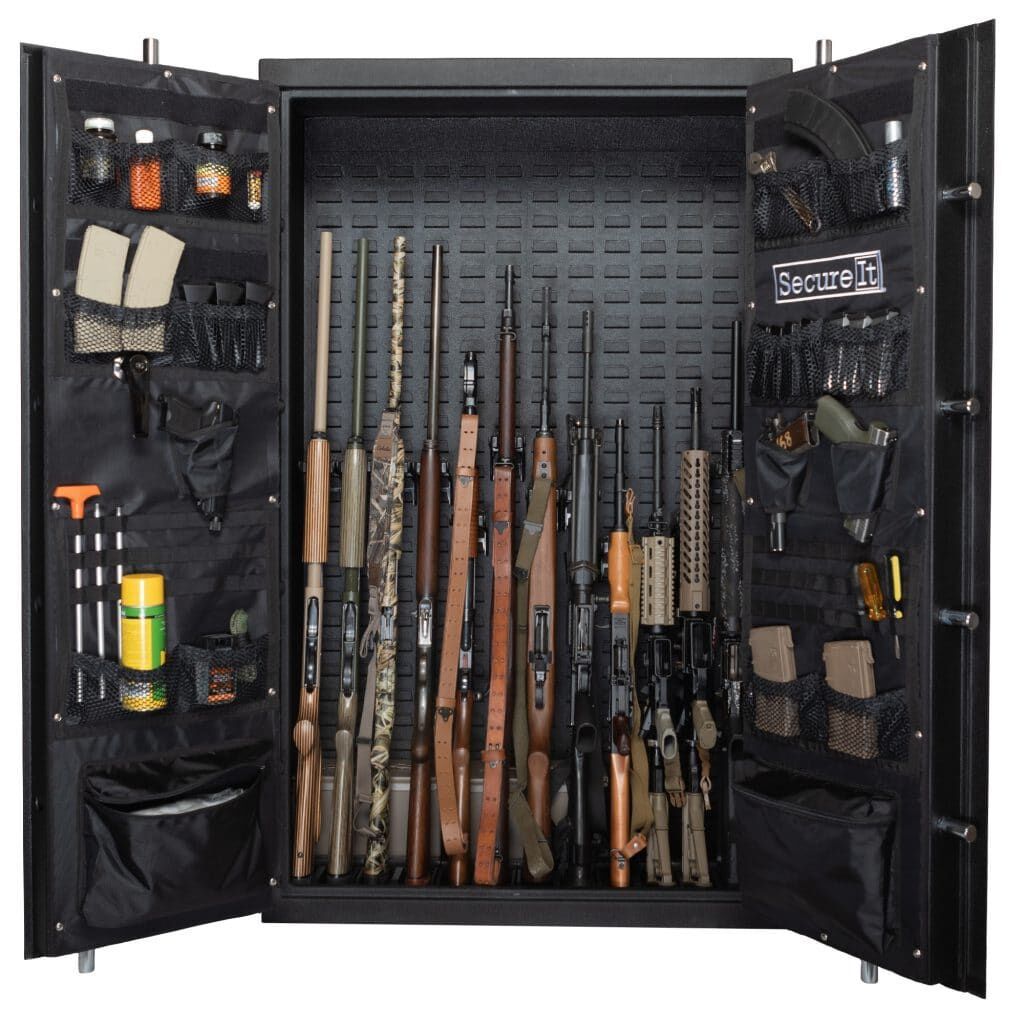
NRA Refuse To Be A Victim Seminars are conducted by NRA Certified Instructors. These seminars are offered in a variety of locations and cater to different ages and content levels. The instructor is the one thing that will not go out of fashion in these seminars. Seminar instructors must ensure that students and instructors are treated with respect. This article aims to explain how to find a reliable instructor, and help you get started.
Course
Before enrolling in the NRA Refuse To Be A Victim instructor training course, you must first attend the Refuse To Be A Violent Class as a student. NRA Regional Counselors will lead instructor development workshops. These workshops focus on technical aspects and expectations. They also address speaking and marketing seminars. A Regional Counselor endorsement and NRA credentials are required to become a certified instructor.

The NRA's Refuse To Be A Victim program is a nationally recognized crime prevention and personal safety seminar. These workshops equip instructors with the skills and qualifications to lead seminars. Designed for both adults and teenagers, Refuse To Be A Victim seminars increase public awareness about the effects of violence and crimes on victims and the victims. Registering is required for the training, which is free. Please note that the NRA will reimburse you for travel expenses if you are unable to attend.
Localities
You can host Refuse to Be A Victim on your campus if you are looking for a way of bringing Refuse to be a Victim to your local community. You can ask the school administration for help in finding a suitable venue or auditorium to focus the seminar on a certain demographic. The school administration will gladly host the seminar either for free or for a nominal fee. It is worth reaching out to them for more information.
To teach the Refuse To Be A Victim seminar online, you will need to take a RTBAV-certified instructor development workshop. Instructor Development Workshops are taught by Regional Counselors, and they start with a seminar to familiarize you with the program. The workshop focuses on technical aspects of the program, as well as instructor expectations. Instructors will also learn how to conduct seminars and improve their speaking abilities. After the workshop is over, instructors can start teaching seminars to their community.
Ages
Prior to completing Refuse To be a Victim(r), Instructor Development Workshop, it is necessary that you attend an Instructor Development Workshop. This two-day workshop is taught by a certified Regional Counselor. After the seminar, you'll learn about the program structure and expectations. This workshop will give you tips and tricks for developing your speaking skills as well as marketing seminars. The Instructor Agreement and Application Form are required to become a Refuse to Be a Victim(r).

Content
"Refusetobea Victim" provides a seminar on personal security that encourages people to refuse to be victims. The seminar, which is based on the National Rifle Association's "Lead with Your Instincts" campaign, is a powerful tool to prevent victimization. It can also be used to help victims of violent crime make safer choices.
FAQ
What kind of training should I get to hunt? What is the average time it takes?
Basic courses are required in order to learn how you can hunt. This course will teach you about hunting and give you information about the laws.
You will learn how you can safely use ammunition and firearms. These items can also be used safely.
This course lasts anywhere from two weeks to three months. Some courses are offered online. Others are taught in person.
To qualify for a license, you must pass a written test. You might also need proof that you have completed a hunter's education course.
What does it cost to be licensed? What if my budget is limited?
The cost to get licensed depends on where you live. It costs anywhere from $20 up to more than $100.
You may be eligible to receive a grant or loan if your income is not sufficient.
To pay the tag fee, you must also pay the fee. Prices vary depending on which type of game is being hunted.
There are tags available for bear, elk and moose as well as waterfowl, upland birds and furbearers, such as foxes.
Some states require registration with the Department of Natural Resources to be eligible for a license.
Before you begin hunting, check local regulations to ensure you are following all rules and requirements.
Can I hunt without a permit?
Yes, hunting is legal without a license. But, you're breaking the law.
You could face jail or fines.
Some states allow residents hunting without the need for a license. To find out if your state allows you to hunt in your area without a license, check with the department of natural resources.
Which state is home to the most deer hunters in America?
Wyoming is the state with the highest number of deer hunters. It also has one of the highest numbers of hunting licenses that are sold each year.
The state with the second-most deer hunters is South Dakota. It is third for the total number of hunting licensaries sold each year.
New Hampshire is the state with the lowest number of deer hunters. It is the least populous state in terms of hunting licenses per capita.
Is hunting dangerous?
Yes, but it is possible to be injured during hunting.
There are many ways to injure your self.
A poor shooting technique is one way. It is possible to shoot at the wrong angle and hit the wrong parts of the animal.
Another risk is being attacked by another animal.
Every year, hunting accidents occur. Many people are injured or killed by their guns every year.
Hunters must ensure that their guns are not loaded until they reach their destination.
You should ensure that your guns are unloaded before you go into the woods.
Keep your eyes open. Pay attention to where you are going and listen out for any sounds.
Do not approach any animals unless you are prepared to defend yourself.
Never chase after prey. Instead, wait patiently and they will come to you.
Never take shortcuts. They could cause injury or death.
Be cautious around cliffs and other locations where it is difficult to see below.
Avoid streams and rivers. These places may flood unexpectedly.
Hunting is a time to forgo alcohol. You can slow down your reaction time and affect your judgement.
All safety equipment should be kept close to your body. Always have a flashlight, first aid kit, and flashlight with you.
It is crucial to be able respond to an emergency. If you do not know how to perform CPR or administer first aid, find someone who knows how to help you.
What are the many benefits of hunting?
Hunting is an ancient tradition practiced by many cultures around the world. It was used for food and shelter as well as tools and medicine. People hunt today for sport and recreation, as well as for food and entertainment. The meat from hunted animal is usually consumed immediately following killing. However, the skin, feathers, bones, antlers horns, teeth and hooves of the animals may be sold as trophy parts.
Hunting isn’t just about eating, it’s a way that you can live.
People who hunt have strong family ties and friendships because they spend time together. They share stories and experiences at campfires, and over meals.
Hunting is a way for hunters to enjoy the natural world and wildlife. This helps them to appreciate all that life has to offer.
When they care for game animals, they learn responsibility and respect for others.
Conservation makes hunters better citizens. They work to protect habitats, species, and the environment. They know how much water and land we need to survive.
Hunters make up a part of a larger group. Their families depend upon them. They support each other. They support local businesses.
Hunters are known for their generosity. Many hunters give money to help veterans and the elderly.
Hunters can also volunteer their time to help those in need. They might volunteer their time with organizations like the Humane Society and the Red Cross.
Which gun is the best for hunting?
The most effective weapon for hunting is a.22 caliber rifle. This is because it is lightweight and easy to carry around. It can be used to take pictures at long distances.
It is best to not anticipate a predator attacking you with this type of gun.
You don't want to waste ammunition by shooting at a tree, as it would do little damage. It is important to aim at your prey with a clear shot.
If you are looking to hunt bigger game like deer or elk, a rifle of the.30 caliber can be used. However, it's heavier than a.22 caliber rifle.
You will need to practice more to achieve the same level of accuracy with a 30-caliber rifle.
What is the most crucial part of hunting animals?
How do you get there? The first step is to learn how to shoot accurately. Then we must learn to hit our target. Finally, you must be able to make changes if you fail.
It is essential to know the basics of hunting. You won't improve if you don't understand what you are doing. Even though you might feel that you have improved through better shots, it doesn't mean you will be any better. The same applies to hitting targets. You won't improve if you don't know why you are missing. It is important to understand your goals.
This is where knowledge really comes into play. Your ability to hunt depends on your understanding of the animal you're trying to kill. If you go out into nature, you will want to be as knowledgeable as possible about the animals you come across. You should be familiar with their behavior, habits, and personalities. You can plan your hunts to make them run smoothly.
Learning from past success stories is a great way to improve your skills. There are many books available on this topic. In addition, there are websites like www.thehuntingzone.com that offer great tips and advice. There are also people with years of experience. They can help you identify what works and what doesn't work.
It's time for you to practice once you've learned all that you can. Practice makes perfect. However, you shouldn't just practice until you feel good. Instead, practice until confidence is built. Confidence makes it possible to relax and enjoy your work. Relaxation can help you focus on the task in hand. Concentration allows you to take advantage of every opportunity that presents itself. Opportunities only come when you are relaxed and focused.
Now it's time put your new skills to work. If you fail, don't be discouraged. You can keep improving and practicing. You'll eventually be successful.
Statistics
- Less than 1% of Hawaii's population has a hunting license. (stacker.com)
- - Percent of residents with paid hunting licenses: 0.7%- (stacker.com)
- - Percent of residents with paid hunting licenses: 0.7%- (stacker.com)
- Over the past 50 years, the number of hunting licenses in California has been on a rapid decline, falling 70% from more than 760,000 in the 1970s to under 268,000 in 2020—even as the state's population has skyrocketed, according to The Mercury News. (stacker.com)
External Links
How To
How to hunt wild hogs
Wild hogs, which are large, can be found in North America and Asia as well as Europe. Wild hogs eat both vegetation and small animals, such as birds, fish, mice, rabbits and mice. They feed mostly at night. The gestation period lasts around six months, after which one piglet is born. Every two years, a sow will give birth to a piglet. Wild hogs live alone, but sometimes they are part of a group called herds.
Wild boars weigh in at around 200 pounds (90 kg). Their head length is between 10 and 12 inches (25-30cm), while their body length is between 20 and 30 inches (50-60cm). Wild pigs tend to have long legs, wide shoulders, and short tails. Their skin is covered with a thick layer fat.
They are extremely sensitive to the senses of sight, hearing, smell, and taste. These senses allow them to spot danger and locate food. They can run up 35 miles per hour (56 km/h), as well as jump up to 15ft (4m) distances. They have sharp teeth and claws. They are strong and aggressive in defense against predators.
Hunting wild hogs is hard because they are intelligent, fast, and elusive. Hunting wild hogs is a dangerous business. The animal could escape if hunters are too quick to shoot. The animal could die if hunters attempt to shoot it too soon.
There are many ways to hunt wild hogs. The most commonly used method is shooting. This requires hunters hunting to find the animal, then waiting until it comes within range. Trapping is another option. Setting traps near water sources is another method of trapping. Some traps contain a smell lure, such a corn meal with peanut butter. When the trap is sprung, the hunter shoots the trapped pig.
Snaring is another option. To catch the pig, snaring uses a rope-covered noose. It works best when the pigs are caught during their mating season.
Other methods include netting, spearing, and poisoning. Netting and spearing involve placing a net or spear through the pig's neck to stop its breathing. Poisoning refers to injecting poison in the pig's neck.
Wild hog hunters must be prepared to deal with the cold. For warmth, hunters may need to wear snowshoes in certain areas. Hunting dogs can help hunters track their animals.